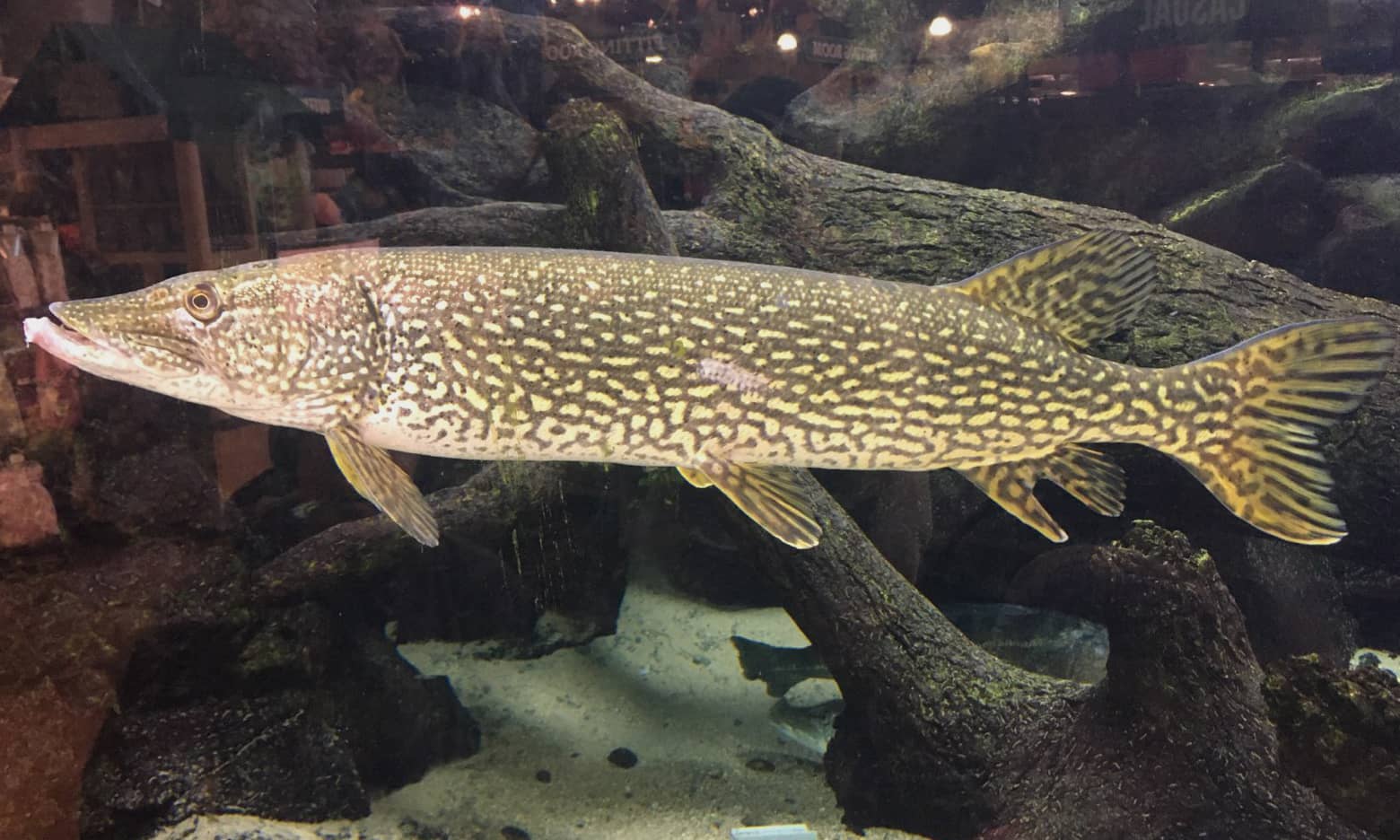
Northern pike are the gamefish species affected most by low water levels in spring. Without flowing creeks and flooded vegetation to run up and spawn in, natural reproduction is likely low in drier seasons such as the one setting up across the region. Simonson Photo.
By Nick Simonson
With spring seemingly on fast forward and any precipitation or runoff on pause, concerns for a successful spawning effort are growing on many of North Dakota’s lakes and rivers where the natural phenomenon occurs and helps sustain populations of popular species like pike, perch, and walleyes.
However, the state’s stocking program is likely on track for a successful egg collection season with backup sites available to help overcome the hurdles low water may present for North Dakota Game & Fish Department (NDG&F) staff, and those efforts will help sustain fisheries in the coming years, despite the current conditions, according to Fisheries Division Chief Greg Power.
“The spawn and the long-term sustainability of our fisheries out there, I think if you ask any biologist, we’re all about water, you’ve seen that just in the last couple of years there’s dramatic fluctuations,” Power relates, “in terms of this year’s spawn, we don’t expect a lot when it comes to natural reproduction of pike and perch, those are two species that are really dependent on good flows and flooded vegetation in the spring of the year,” he suggests.
Major rivers across North Dakota have exhibited lower water levels coming into the winter of 2021 when excess precipitation from the late summer and fall of 2019 went through the various basins around the state and things began to dry up. Now, with a winter with little local snowfall riverbanks are visible, shorelines are exposed, and fisheries are seeing decreased water levels as a dry, early spring settles in. This situation often impacts spawning by early-running species such as perch and pike, which utilize shallows and vegetation flooded by spring meltwater and runoff to lay their eggs and provide cover for hatched fry. Without those areas, the spawn for those fish will likely be less successful, without a change in the weather, Power predicts.
Despite these challenges, Power plans on a successful season for NDG&F egg collecting activity. While most pike are collected and milked for their eggs and milt in the backwaters of bays on Lake Sakakawea, the department always has the abundant populations of the fish in Devils Lake where they can go if things get too low on the western reservoir. Pike utilize inflowing creeks and channels at the end of bays and run up them to find suitable spawning areas, and that’s where agents typically trap them in nets for collection.
“Pike might be a little more challenging again, because what we historically do is go into these big bays and get out toward the headwaters of the bays in the creeks, and those creeks this year are almost dry,” Power explains of the current state of pike spawning sites on Lake Sakakawea, adding, “so pike are going to be a little more challenging, thankfully Devils Lake is always there as a backup.”
Walleyes on the other hand are an easier fish to collect each spring, and Power doesn’t have much of a concern with the annual gathering of the state’s favorite fish. Roughly eighty percent of the state’s anglers pursue walleyes, and despite another year of record stocking demand on tap for the agency, the NDG&F will likely meet its goals of providing more fishing opportunities for Ol’ Marbleyes than ever before. While most of the state’s walleye fisheries are highly dependent on stocking efforts, there are some that do exhibit natural reproduction, such as the Missouri River system and Lake Oahe. There, lower waters may impact recruitment some, but aren’t a major factor elsewhere.
“Walleye [populations] are probably more reliant on our stocking efforts,” Power states, suggesting that the lower levels of water won’t inhibit netting efforts, adding, “most of our walleye the last five to ten years have come from Sakakawea, the population is still good, and they’re not nearly as dependent on the runoff for our netting efforts,” he concludes.
Following last year’s record stocking of walleyes in terms of total number of transplanted fingerlings and the number of water bodies they were placed in, Power predicts yet another increase, making the collection of those fish more important in spring to satisfy angler demand and the growing opportunities the NDG&F hopes to provide.
In conjunction with partners at the Garrison National Fish Hatchery and the Valley City National Fish Hatchery, the agency expects to answer the demand of 11.3 million fingerlings to be stocked in the coming months into lakes of all sizes throughout the Peace Garden State.
